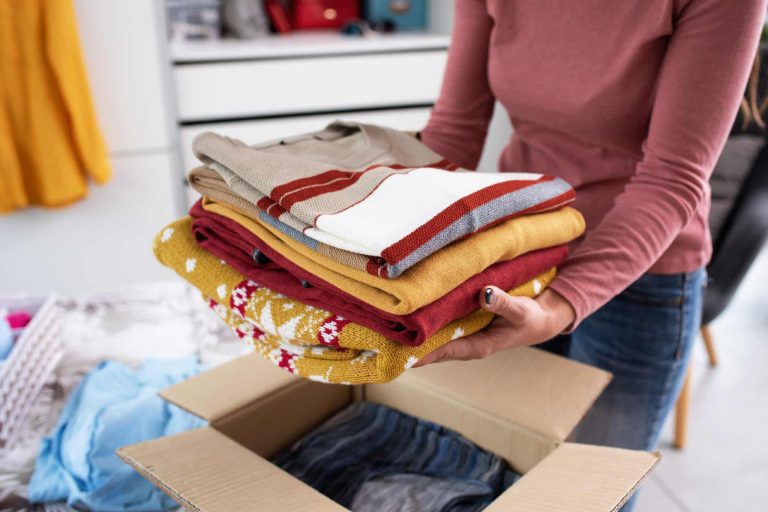When you’re in the thick of moving house, one task that seems deceptively simple is packing clothes for a move. At first glance, it might seem like you can just toss everything into a bag or box and call it a day. But anyone who’s ever unpacked a box of wrinkled, dusty, or even damp clothes knows that how you pack—and what you pack with—makes a huge difference.
Using the right materials not only protects your clothes but also saves you time, space, and stress. Whether you’re moving across Brisbane or across the country, here are the best materials to use when packing clothes for a move, plus tips on how to use each one effectively.
1. Wardrobe Boxes (Portable Closets)
Best for: Hanging clothes like dresses, suits, jackets, and shirts
Why it works: Wardrobe boxes come with a metal hanging bar inside, allowing you to transfer clothes directly from your closet without removing them from their hangers. This keeps garments wrinkle-free and saves time on both packing and unpacking.
Pro Tip: Label the outside of the wardrobe box by category (e.g., “Work Clothes” or “Winter Coats”) so you can easily locate what you need after the move.
2. Suitcases and Travel Bags
Best for: Folded clothes, shoes, undergarments, and accessories
Why it works: If you’re flying or driving to your new place, you’ll likely be taking a suitcase or two anyway. Maximize space by filling them with clothes instead of leaving them empty.
Pro Tip: Use rolling suitcases for heavier items like jeans or sweaters. Soft duffle bags are great for lighter clothing and can be squeezed into tight spaces in the moving truck.
3. Vacuum-Seal Bags
Best for: Bulky items like jackets, blankets, and winter gear
Why it works: Vacuum-seal bags compress soft items, significantly reducing the space they take up. They’re also great for protecting clothes from dust, moisture, and pests.
Pro Tip: Be cautious with delicate fabrics—vacuum bags can wrinkle or flatten them permanently. Stick to durable materials like cotton, fleece, or polyester.
4. Plastic Bins with Lids
Best for: Long-term storage or off-season clothing
Why it works: Plastic bins are sturdy, stackable, and reusable. They offer better protection than cardboard boxes, especially in humid or rainy climates like Brisbane’s.
Pro Tip: Use clear bins so you can easily see what’s inside, and add a dryer sheet to keep clothes smelling fresh. Ashraf Hajaj, senior consultant at National Removalist, suggests using bins for kids’ seasonal clothes or items you won’t need right away.
5. Garbage Bags (The Budget Hack)
Best for: Hanging clothes or last-minute packing
Why it works: While not glamorous, garbage bags are cheap, easy to find, and surprisingly effective. Slide a group of hanging clothes into a garbage bag from the bottom up, tie around the hangers, and you have an instant garment bag.
Pro Tip: Use heavy-duty, unscented bags to avoid tears or strange smells. Tie the top loosely to prevent clothes from getting crushed.
6. Tissue Paper and Packing Paper
Best for: Delicate or easily wrinkled clothing like silk, lace, or linen
Why it works: Wrapping delicate garments in tissue paper prevents friction and wrinkling during the move. It’s a gentle layer of protection that’s ideal for expensive or sentimental items.
Pro Tip: Avoid using newspaper—it can transfer ink onto your clothes. Always go for clean, white packing paper or tissue.
7. Ziploc Bags
Best for: Socks, underwear, belts, and accessories
Why it works: Ziploc bags help keep small items organized and prevent them from getting lost. They’re especially handy for kids’ clothing or drawer-based storage.
Pro Tip: Group items by category and label each bag. This makes unpacking drawers fast and frustration-free.
8. Laundry Baskets and Hampers
Best for: Casual clothes, towels, and shoes
Why it works: Don’t waste the storage you already have! Fill your laundry baskets with soft goods to save on box space. They’re also easy to carry and stack.
Pro Tip: Cover the top with a sheet or plastic wrap to keep everything in place and dust-free during transport.
9. Bubble Wrap (Optional but Handy)
Best for: Accessories, belts with metal buckles, and clothes with embellishments
Why it works: Bubble wrap provides a cushioned barrier for items that could scratch, tear, or snag other fabrics. It’s especially useful if you’re packing jewelry or belts with your clothes.
Pro Tip: Wrap each accessory individually to avoid tangles or damage. According to Ashraf Hajaj from National Removalist, this step is often skipped, but it’s one of the best ways to prevent last-minute moving day damage.
Final Thoughts: Combine Smart Materials with Smart Packing
Packing clothes for a move doesn’t have to be a last-minute scramble. The key is choosing the right materials for each type of clothing. Whether you’re trying to save space with vacuum-seal bags, protect your delicates with tissue paper, or keep things simple with wardrobe boxes, having the right supplies can make the process smoother and your clothes safer.
Start early, stay organized, and remember: the best move is a prepared one. With a little planning and the right materials, you’ll arrive at your new home with clothes that are clean, wrinkle-free, and ready to wear.

